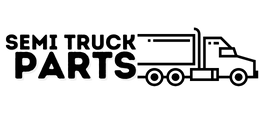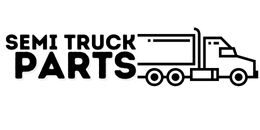Truck Mirrors Choosing Between OEM and Aftermarket Options
Understanding OEM Truck Mirrors
Original Equipment Manufacturer (OEM) truck mirrors are designed specifically for particular truck models, ensuring a perfect fit and optimal functionality. These mirrors are produced by the same manufacturers who create the original parts for truck makers, making them the default choice on new vehicles. The design of OEM truck mirrors is focused on meeting the stringent specifications set by the truck manufacturer, which guarantees that they integrate seamlessly with the vehicle’s design and safety systems.
OEM truck mirrors are constructed with high-quality materials to withstand rigorous use and harsh environmental conditions, maintaining durability and reliability over time. They are also calibrated to provide the precise field of view required by the vehicle’s design, which is crucial for safe driving. Additionally, OEM mirrors often come with features like heating elements to defrost mirrors in colder climates and built-in turn signals for enhanced safety.
Purchasing OEM truck mirrors usually means higher costs upfront compared to aftermarket options; however, the investment can be justified by the superior quality and exact compatibility. Moreover, they come with a warranty that is backed by the truck manufacturer, offering peace of mind and protection against any defects.
Choosing OEM truck mirrors ensures that drivers maintain the vehicle’s original appearance and functionality, making this option particularly appealing to those who wish to keep their truck in factory condition for aesthetic reasons or future resale value.
Benefits of OEM Truck Mirrors
OEM (Original Equipment Manufacturer) truck mirrors offer several key advantages that make them a preferred choice for many truck owners seeking reliability and optimal performance. Here are the main benefits of choosing OEM mirrors for your truck:
Guaranteed Fit and Integration
OEM truck mirrors are designed specifically for particular models, ensuring a perfect fit without any modifications. This exact fit not only looks better but also prevents issues such as vibration and wind noise, which can occur with poorly fitting aftermarket mirrors. Furthermore, because they are model-specific, OEM mirrors integrate seamlessly with the vehicle’s existing systems, such as electronic adjustability, auto-dimming capabilities, and side cameras.
Maintained Safety Standards
Safety is a critical consideration, and OEM mirrors are built to meet the manufacturer’s strict safety standards. They provide the correct field of view and are often equipped with features like blind-spot indicators, which might not be accurately replicated in aftermarket versions. This adherence to safety standards helps in maintaining the vehicle’s original safety rating and functionality.
Reliability and Longevity
OEM truck mirrors are manufactured using high-quality materials and are subject to rigorous testing processes to ensure durability and performance under various conditions. This reliability translates to fewer replacements and repairs over the life of the mirror, offering long-term value despite the higher initial cost.
Warranty and Support
Purchasing OEM mirrors usually comes with the assurance of a warranty that covers defects and failures, a benefit seldom matched by aftermarket providers. Additionally, support is readily available through authorized dealers, making it easier to address any issues that may arise quickly and efficiently.
Resale Value
For truck owners who may consider selling their vehicle in the future, maintaining original equipment, including mirrors, can enhance the resale value. Many buyers prefer vehicles that remain as close to their original state as possible, and having OEM parts can be a selling point.
Overall, while OEM truck mirrors might come with a higher price tag, their benefits in terms of fit, function, safety, and long-term value offer a compelling argument for their purchase. For truck owners who prioritize these aspects, OEM mirrors are a worthwhile investment.
Understanding Aftermarket Truck Mirrors
Aftermarket truck mirrors are replacement parts not sourced from the truck’s original manufacturer. These mirrors are produced by third-party companies and are designed to fit multiple vehicle models or enhance certain features beyond what OEM mirrors offer. Understanding the scope and capabilities of aftermarket truck mirrors can help truck owners make informed decisions based on customization needs and budget constraints.
Variety and Customization
One of the key attractions of aftermarket truck mirrors is the vast selection available. Unlike OEM mirrors that are model-specific, aftermarket mirrors come in a range of styles and functionalities, allowing for significant customization. Truck owners can choose mirrors with advanced features like increased adjustability, built-in LED lights, or even cameras that OEM might not offer for specific models.
Availability and Accessibility
Aftermarket mirrors are generally more accessible than OEM parts, especially for older models or less common vehicles for which OEM parts may no longer be produced. This accessibility makes it easier for truck owners to find replacement mirrors quickly, without the potential wait times associated with ordering OEM parts from a dealer.
Innovation in Design
Many aftermarket companies invest in developing innovative features that might not be available in OEM mirrors. This includes advancements in aerodynamics, mirror heating technology, and electronic integration, providing truck owners with the opportunity to upgrade their vehicle’s functionality.
Cost-Effective Solutions
Typically, aftermarket truck mirrors are less expensive than their OEM counterparts. This cost advantage makes them an appealing option for those who need to replace damaged mirrors or are looking for a budget-friendly upgrade. The lower price point, however, may reflect variations in material quality or fit precision, which can be significant for some users.
Understanding these aspects of aftermarket truck mirrors equips truck owners with the necessary information to weigh the benefits against potential drawbacks, such as fit issues or shorter lifespans compared to OEM parts. This knowledge is crucial when deciding whether aftermarket mirrors are a suitable choice for their needs.
Benefits of Aftermarket Truck Mirrors
Aftermarket truck mirrors offer a range of benefits that make them a popular choice among truck owners who are looking to customize their vehicles or find cost-effective replacement options. Here are some of the primary advantages of choosing aftermarket mirrors:
Cost Efficiency
One of the most compelling reasons to choose aftermarket mirrors is their affordability. These mirrors typically cost less than OEM parts, providing a budget-friendly option for repairs and upgrades. This price difference makes aftermarket mirrors an attractive choice for owners who need to replace broken or worn-out mirrors without breaking the bank.
Wide Range of Options
Aftermarket manufacturers often provide a greater variety of mirror styles and functionalities than what is available through OEM sources. This diversity allows truck owners to select mirrors that specifically meet their needs or aesthetic preferences, whether they’re looking for larger mirrors for better visibility, mirrors with advanced features like LED lights, or mirrors that add a stylistic touch to the vehicle.
Innovative Features
Aftermarket parts are sometimes at the forefront of technology, incorporating new features that may not be available in OEM mirrors. Innovations such as integrated cameras for improved rear visibility, dynamic turn signals, or auto-dimming capabilities can enhance safety and convenience on the road.
Availability
Aftermarket truck mirrors are readily available and often easier to acquire than OEM parts, especially for older or less common truck models. This widespread availability ensures that truck owners can quickly obtain the necessary parts without lengthy wait times often associated with dealer orders.
Customization Potential
For those looking to modify their trucks for specific purposes or to express personal style, aftermarket mirrors can provide unique customization opportunities. Whether it’s upgrading to a more rugged design for off-road use or enhancing the truck’s appearance with sleek, modern mirrors, the aftermarket offers solutions that OEM parts might not.
Overall, aftermarket truck mirrors can be a wise choice for truck owners looking for versatility, innovation, and cost savings. They allow for greater personalization and can often be a practical alternative to OEM parts, especially when considering budget constraints or specific feature upgrades.
Quality Comparison
When choosing between OEM and aftermarket truck mirrors, the quality of the products is a critical factor to consider. This chapter explores the differences in quality between these two options, examining materials, durability, and the overall impact on vehicle safety and performance.
Material Quality
OEM truck mirrors are typically made from high-grade materials that match the exact specifications of the truck’s original equipment. This ensures that the mirrors not only fit perfectly but also withstand the rigors of daily use and harsh weather conditions. Aftermarket mirrors, while often robust, may vary significantly in material quality depending on the manufacturer. Some aftermarket products match OEM quality, but others might use less durable materials to cut costs, potentially affecting longevity and performance.
Durability and Longevity
OEM mirrors are designed for longevity and are tested rigorously to endure the life of the vehicle under normal conditions. They are built to resist common issues such as vibration, wind noise, and environmental wear. Aftermarket mirrors might not always undergo the same level of testing, leading to a greater variation in durability. However, top-tier aftermarket manufacturers may offer products that rival OEM parts in longevity and robustness.
Safety and Functionality
Safety is paramount in vehicle design, and mirrors play a crucial role in providing visibility for safe driving. OEM mirrors are specifically engineered to meet the safety standards required by the vehicle manufacturer, including the correct field of view and structural integrity in the event of an accident. Aftermarket mirrors, although they can offer additional features like wider angles or integrated technology, must also be scrutinized for how they maintain or enhance vehicle safety. The adaptation of aftermarket mirrors to various vehicle models without compromising safety is a significant quality indicator.
Consistency of Manufacturing
OEM parts benefit from the consistency that comes with large-scale manufacturing processes aligned with specific vehicle designs. This consistency ensures that each part will perform as expected without variation. Aftermarket parts, while they can offer high quality, may have more inconsistency due to the diversity of products and the range of manufacturing standards across different companies.
Understanding these quality considerations is essential for truck owners to make an informed decision that balances cost, performance, and safety. While OEM mirrors generally provide assurance of maximum compatibility and durability, well-chosen aftermarket mirrors can also serve as excellent replacements or upgrades, provided they meet rigorous quality standards.
Installation and Compatibility
Proper installation and compatibility are essential considerations when choosing between OEM and aftermarket truck mirrors. This chapter delves into the ease of installation, potential compatibility issues, and provides tips for ensuring that either type of mirror functions correctly once installed.
Installation Process
OEM truck mirrors are designed for a specific model, which typically means that installation is straightforward and can often be performed without any modifications or special tools. These mirrors are intended to fit into the exact mounts and electrical connectors already present on the vehicle, ensuring a seamless integration.
Aftermarket mirrors, while versatile, may require more effort during installation. They might need additional brackets, adapters, or even minor modifications to the vehicle to fit correctly. The installation process can vary widely based on the brand and model of the mirror, so it’s crucial for truck owners to be prepared for potential additional steps or the need for professional installation services.
Compatibility Issues
Compatibility extends beyond physical fit and includes the integration of electronic features such as power adjustments, heating, and turn signals. OEM mirrors will naturally support all original functions without issue. Aftermarket mirrors, however, may not always connect seamlessly with the truck’s existing wiring and control systems, potentially leading to functionality limitations or the need for additional wiring harnesses or modules.
Tips for Smooth Installation
-
Check Specifications Thoroughly
: Before purchasing aftermarket mirrors, verify that the product specifications match your truck’s requirements, including size, connector types, and supported features.
- Seek Professional Help: If you are not experienced with automotive installations, consider hiring a professional to install your mirrors. This can prevent improper installation, which might lead to damage or safety issues.
- Test All Functions: After installation, it’s important to test every function of the mirror, such as electronic adjustments and heating, to ensure they operate correctly. This test should be done before taking the vehicle back into regular use.
- Read Reviews and Recommendations: Look for reviews or recommendations for specific aftermarket mirror models suited for your truck type. Feedback from other users can provide valuable insights into the ease of installation and compatibility.
By considering these factors, truck owners can make more informed decisions when replacing or upgrading their truck mirrors, ensuring that the new mirrors not only fit well but also perform as expected, maintaining the safety and functionality of the vehicle.
Cost Analysis
When considering the replacement or upgrade of truck mirrors, cost is a significant factor. This chapter provides a detailed analysis of the costs associated with OEM and aftermarket truck mirrors, including initial purchase, installation, maintenance, and potential long-term expenses.
Initial Purchase Price
OEM truck mirrors generally carry a higher price tag due to their custom fit, superior materials, and the branding of original manufacturers. They are specifically designed for a particular model, which adds to the cost but ensures perfect compatibility and performance.
Aftermarket mirrors, on the other hand, are usually less expensive and offer a broader range of prices due to the competitive nature of the market. The lower cost is appealing to truck owners working within a tight budget or those who prefer spending less on vehicle maintenance.
Installation Costs
The installation of OEM mirrors is typically straightforward, often requiring no additional parts or modifications, which can minimize installation costs, especially if the owner is capable of performing the installation themselves.
Aftermarket mirrors may require additional fittings, adapters, or even professional help to ensure they are installed correctly, potentially increasing the overall cost. The need for professional installation can vary significantly depending on the complexity of the mirror’s design and its compatibility with the vehicle.
Maintenance and Long-Term Costs
OEM mirrors are less likely to need frequent replacements due to their high-quality construction and compatibility with the vehicle. This reliability can lead to lower long-term maintenance costs.
Aftermarket mirrors might not match the durability of OEM parts and could require more frequent replacements or adjustments over time. However, their lower initial cost can offset these potential additional expenses, making them a viable option for many owners.
Balancing Cost with Quality and Safety
While the upfront cost is an important consideration, it’s also crucial to balance this with long-term value, safety, and performance. Investing in OEM mirrors might seem more expensive initially but can provide peace of mind through better quality and fewer replacements. Aftermarket mirrors offer immediate cost savings and can be a suitable alternative if chosen carefully, considering quality and compatibility to avoid future issues.
In summary, truck owners must weigh initial costs against potential long-term savings when deciding between OEM and aftermarket truck mirrors. Understanding the full scope of costs involved can help in making a decision that aligns with both budget and vehicle needs.
Making the Right Choice
Deciding between OEM and aftermarket truck mirrors involves considering various factors that impact both the functionality and economics of your vehicle. This final chapter summarizes the key points discussed throughout the article and offers guidelines to help truck owners make the best choice for their specific needs and budget.
Assess Your Truck’s Requirements
-
Compatibility and Fit
: Consider whether your priority is a guaranteed fit and seamless integration, which is more likely with OEM mirrors, or if you are prepared to potentially manage slight modifications with aftermarket options.
- Safety Features: Evaluate the importance of maintaining all factory safety features, as OEM mirrors will support all existing functionalities without complications. Aftermarket mirrors should be carefully assessed for their compatibility with safety systems.
Consider Your Budget
- Initial vs. Long-Term Costs: Determine if your budget allows for a higher upfront cost for OEM mirrors, which may offer savings in the long term through durability and less frequent replacements. If upfront cost is a concern, aftermarket mirrors can provide a cost-effective solution, though they might involve additional future expenses.
Think About Your Long-Term Goals
- Vehicle Longevity and Resale Value: If you plan to keep your truck for a long time or are concerned about its resale value, investing in OEM mirrors might be the wiser choice. For those who frequently modify or upgrade their trucks, aftermarket mirrors might offer more flexibility and customization.
Seek Professional Advice
- Consultation: If you are unsure, consulting with a professional mechanic or an automotive expert can provide personalized advice based on your specific truck model and driving needs. They can offer insights into the best products on the market and what would work best for your vehicle.
Final Thoughts
Making the right choice between OEM and aftermarket truck mirrors doesn’t just come down to cost. It’s about understanding the balance between quality, safety, compatibility, and budget. By considering all these factors, truck owners can ensure that they select mirrors that not only fit their truck perfectly but also enhance their driving experience and maintain the vehicle’s integrity.
End with a call to action, encouraging readers to review their options thoroughly and make an informed decision that aligns with their truck’s needs and their personal or business priorities.
For detailed information, you can contact us at Truck Mirrors


